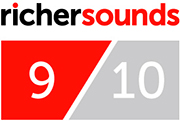
 Fleet Foxes’ long awaited and rave-reviewed new album, Crack Up is now finally with us. But is it really worth all the hype?
Fleet Foxes’ long awaited and rave-reviewed new album, Crack Up is now finally with us. But is it really worth all the hype?
Hailing from Seattle in the USA, Fleet Foxes have been making waves since debuting on MySpace nearly a decade ago. The band also wear the badge of honour for not only surviving a hiatus (usually code for we’re breaking up and don’t want to devastate fans) but also giving rise to the legendary Father John Misty, who is in fact their former drummer!
Now, despite Fleet Foxes being classified as indie, I’m going out on a limb and saying no, no they are not. The album was given rave reviews before it’s full release including a big statement of ‘Probably the best thing you’ll hear all year’. Not one to think an ‘indie’ album could possibly take that title, I was keen to falsify the statement…and oh how wrong I was.
I Am All That I Need/Arroyo Seco/Thumbprint Scar – The opening of this long track (over six minutes) is a little odd to contend with, a full minute of just slurred, spoken word. However, it launches relatively quickly into a Spanish inspired set of strummed guitars, melodic bass and well-harmonised vocals. If you’re familiar with my usual feelings on indie music and the genre’s tendency to supplant annoying backing vocal melodies into songs, it may be a surprise that despite it being rather present in this song; I’m a big fan of it. The song is complex and deep, with the guitar and bass remaining constant in their timbre, they are joined with both violin and cello as well as piano at points. There is also some genius structural work in the song by making it feel like a true journey with the addition of environmental noises such as waves and doors closing; honestly, I’ve not heard any band manage something quite like it.

Cassius flows on seamlessly from the opening marathon track. With a departure from the more staccato picks and strums of the opening tune, we’re left with a light acoustic energy that reverberates throughout the song as the band weaves multiple vocal melodies over a complex yet understated drum line and atmospheric, never harsh or overpowering synth. Once again, we are led, gaplessly on to – Naiads, Cassadies by a light piano melody which dissipates as the previously powerful vocals become softer and more emotive and the strummed guitar transforms into a harp-like state to lead us to the end of the opening trio, I can’t remember ever being so moved by an opening set of songs.
Third of May/Odaigahara, without a gapless lead in, seems to mark a new chapter in the album. A more ‘traditionally’ indie-acoustic piece in nature as it opens into its full, near nine minute length. As the guitar and piano rise and fall against one another, the refined vocals the band are known for play off one another and add a variety of tones. However, despite the gorgeous trio of opening songs, the length of this track doesn’t perform quite the same way, and around the halfway mark, interest starts to wane, I’m sad to say. Unfortunately due to the long tail off of the song, combined with it’s more dream-like pace, the following song, If You Need To, Keep Time On Me fails to break the stasis left by the previous song.
Mearcstapa however, with its more ominous bassline and slightly more aggressive drums, breaks the reverie and infuses the album with a more urgent sense of emotion. The almost percussive use of guitar over a set of violins breaks the miasma of the prior two songs and we’re back on track. Similar in nature and structure is the fourth track of the album Kept Woman, a melancholy piece led by reverbed, almost choral vocals over a minor piano piece, punctuated with picked acoustic guitar.
As we head towards the close of the album, Fool’s Errand provides a jolt and more energetic, yet still melodic tonic to the almost overpowering flow of complexity and emotion that has come before it. The lighter, shimmering guitar riff that sits quietly alongside the main backing strums and pacing drum beat adds an interesting layer to a song that, if the Spotify listens are to be believed, is likely to chart very well as a single of it’s own.
Strangely, the track that carries the album to its close, is the title track of the album; Crack Up. Despite carrying a similar formula of vocal harmonies, understated drums and strummed acoustic guitar across the album, the band make it work. Like every song on the album, their similarities also highlight their differences, the lyrics and melodies are complex and nuanced and the album is truly a joy to listen to.

Author: Steve, Southgate Store





